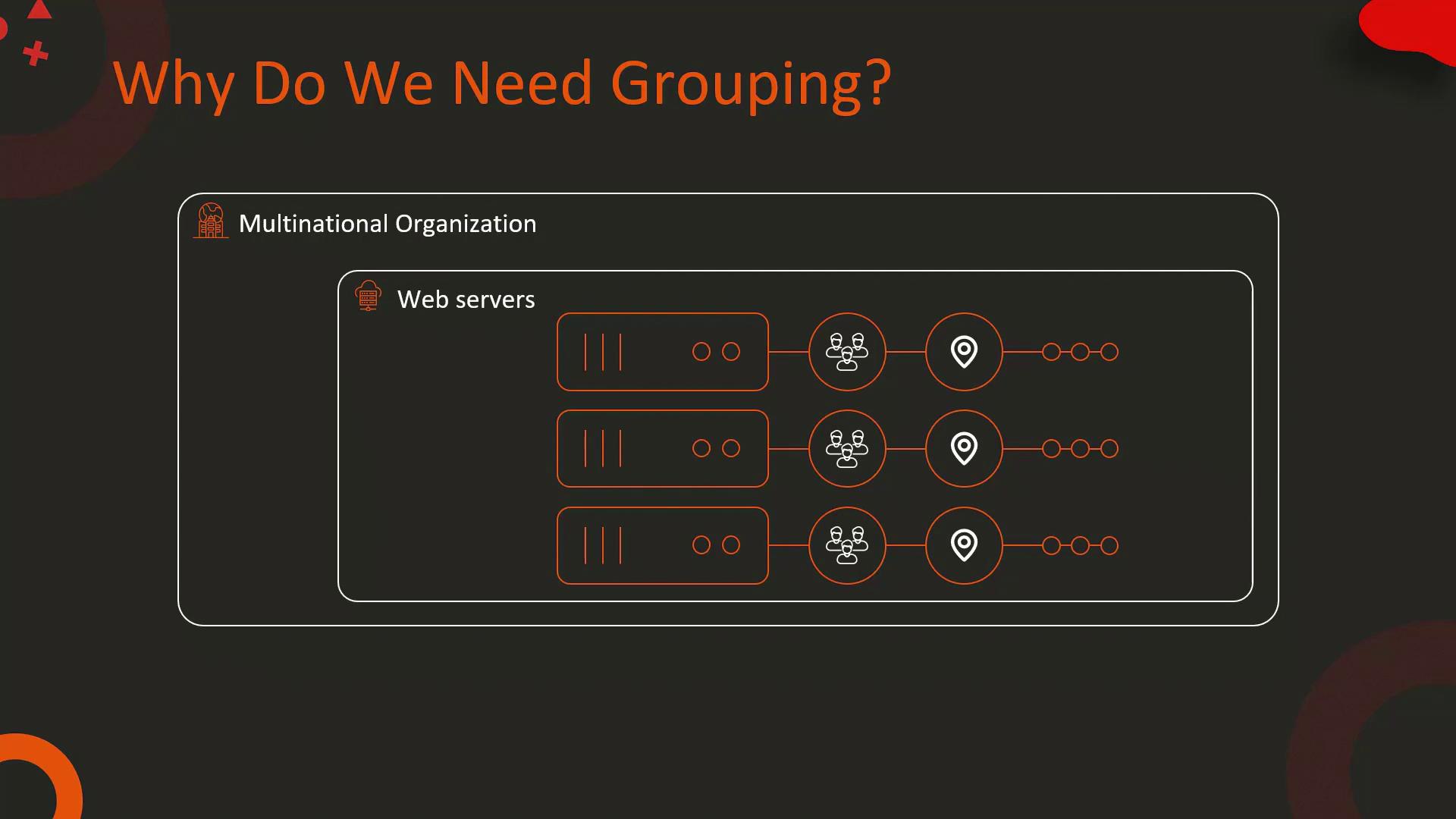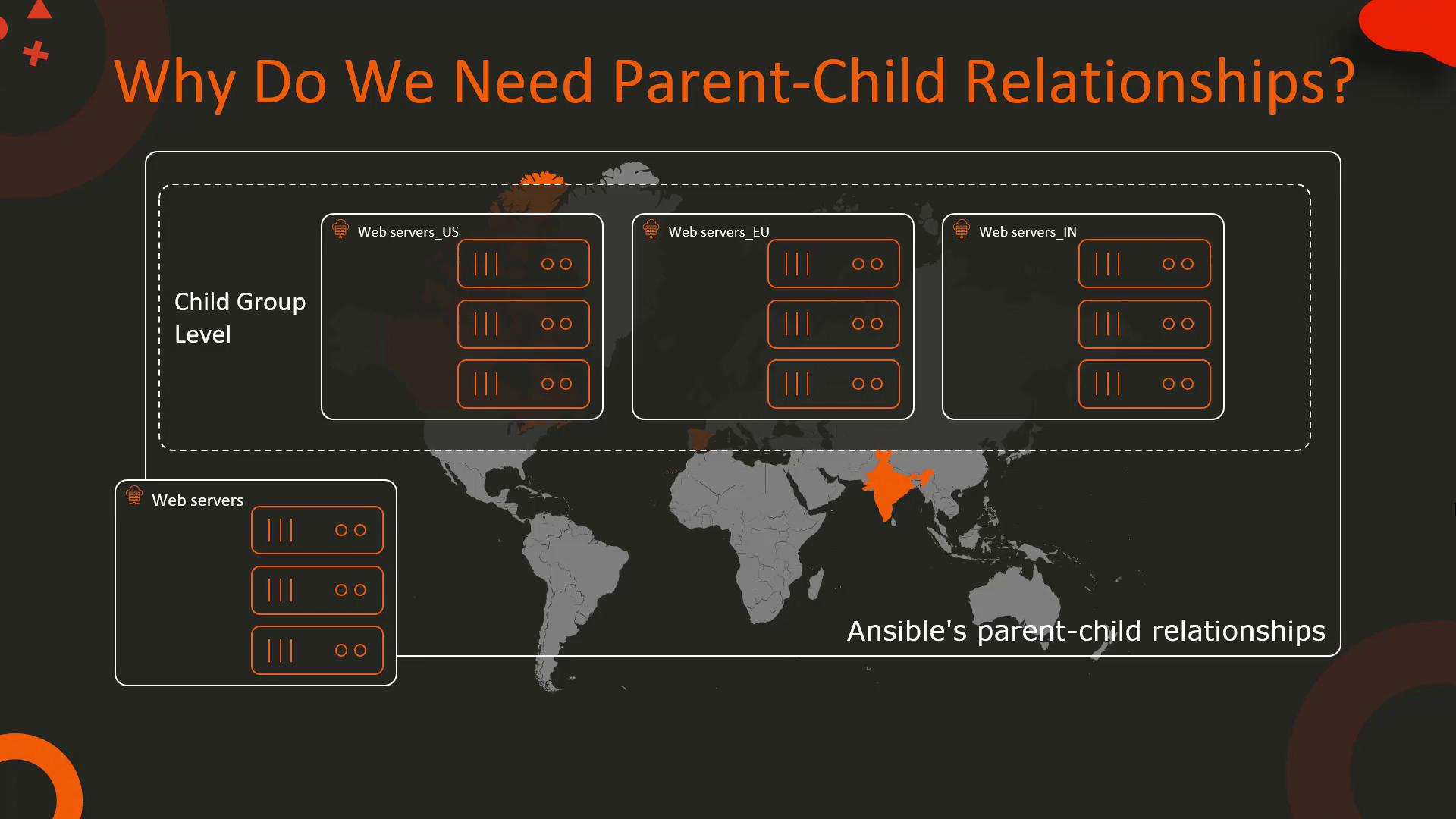Learn Ansible Basics Beginners Course
Ansible Inventory
Grouping and Parent Child Relationships
Imagine you are an IT administrator responsible for a vast and complex infrastructure spanning multiple locations. In such an environment, you may be managing hundreds of servers that serve various roles—such as web servers, database servers, or application servers.

Manually managing each server can quickly become overwhelming. For instance, when updating all web servers, manually specifying each host is both time-consuming and prone to error. This is where effective grouping strategies make a significant difference.
By categorizing servers based on roles, geographic locations, or other criteria, you can simplify many routine tasks. For example, grouping all web servers under a common label allows you to apply updates or configuration changes to the entire group with a single command.

Ansible Grouping Advantage
Ansible’s grouping feature lets you assign a common label to a set of servers, enabling efficient bulk operations.
Ansible's grouping functionality comes to the rescue when managing multiple servers simultaneously. You can define groups that represent collections of servers sharing similar roles. Once a group is defined, targeting that group for updates or configuration changes applies those changes to all associated servers.
However, challenges can arise when servers in the same role are distributed across different locations, each requiring location-specific configurations. If you create separate groups for each location, you might end up duplicating common settings. Ansible's parent-child relationship feature elegantly solves this problem by allowing you to:
- Define a parent group (for example, "Web Servers") to hold common configurations.
- Create child groups (such as "Web Servers US" and "Web Servers EU") for location-specific settings.

Grouping and Parent-Child Structures in Ansible
Consider an example where you have servers in the US and the EU. Using the INI format, you can define groups with parent-child relationships as follows:
[webservers:children]
webservers_us
webservers_eu
[webservers_us]
server1_us.com ansible_host=192.168.8.101
server2_us.com ansible_host=192.168.8.102
In this example, "webservers_us" and "webservers_eu" are defined as child groups under the parent group "webservers". This allows you to maintain common configurations at the parent group level while applying specific settings within each child group.
Similarly, in YAML format, you can organize groups using the hosts keyword, and establish parent-child relationships with the children keyword:
all:
children:
webservers:
children:
webservers_us:
hosts:
server1_us.com:
ansible_host: 192.168.8.101
server2_us.com:
ansible_host: 192.168.8.102
webservers_eu:
hosts:
server1_eu.com:
ansible_host: 10.12.0.101
server2_eu.com:
ansible_host: 10.12.0.102
This YAML structure begins by defining all groups under the all key. It then creates a parent group "webservers" with its respective child groups "webservers_us" and "webservers_eu". Each child group contains its specific server configurations.
Benefits of Grouping and Hierarchies
Organizing your servers into groups and establishing parent-child relationships minimizes configuration duplication and streamlines management, resulting in a more efficient and error-free IT infrastructure.
By leveraging Ansible’s grouping and parent-child relationship features, you simplify server management, reduce the risk of configuration errors, and boost operational efficiency across your diverse IT infrastructure.
Watch Video
Watch video content